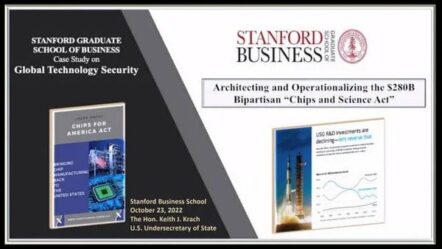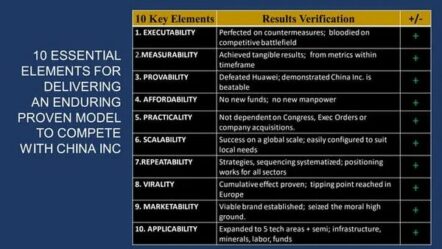Endless Frontier Strategy 4/20/20- Keith Krach and Paul Touw
History of $ 100B Endless Frontiers Act
In October 2019, Under Secretary of State Keith Krach Senior Advisory Paul Touw developed a strategy to solidify the United States’ leadership in scientific and technological innovation through increased investments in the discovery, creation, and commercialization of technology fields of the future.
The strategy addresses the fact that China is stealing American intellectual property and aggressively investing in research and commercialization to dominate the known technology fields of the future.
The strategy addresses that without a significant and sustained increase in investment in research, education and training, technology transfer and entrepreneurship, manufacturing, and the broader U.S. innovation ecosystem across the nation, it is only a matter of time before America’s global competitors overtake the U.S. in terms of technological primacy.
In early 2020, this strategy which was presented to Senator Schumer and Young served as the model and catalyst for the bipartisan, bicameral Endless Frontier Act.
The legislation targets support to ensure new research investments translate into new American companies, manufacturing and high-tech jobs, and opportunities for regions across the country to become global centers of emerging technology industries.
The Endless Frontier Act proposes an expansion of the National Science Foundation (NSF)—to be renamed the National Science and Technology Foundation (NTSF)—and the establishment of a Technology Directorate within NTSF to advance technology in 10 critical focus areas.
The strategy includes the plan for taking the $100B of USG funding and growing it to $500B with private sector and our closest technological allies matching funds.
R&D Objectives
Increase U.S. R&D investment in 10 national security sectors
Protect IP and proprietary technology
Compound government investment with private sector and allies
Synergize spending between defense & commercial applications
Leverage private sector resources and know-how
Build collaboration with TD-12 partners to counter malign regimes
Strengthen technological warfare capability
Increase economic competitiveness of US and T-10 companies
Create new industries and jobs
Maximize “commercialization” of R&D investments





